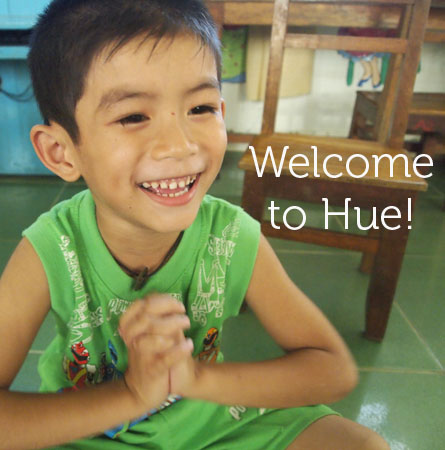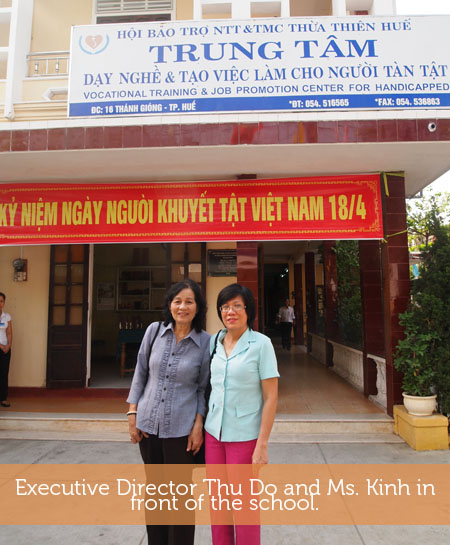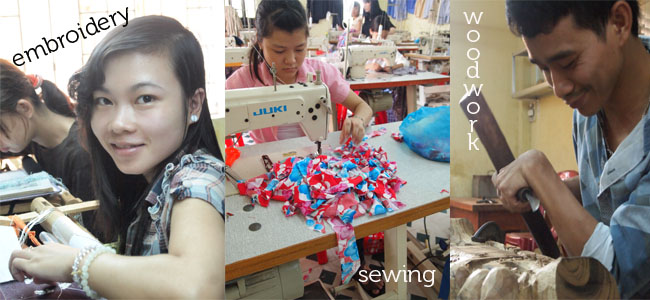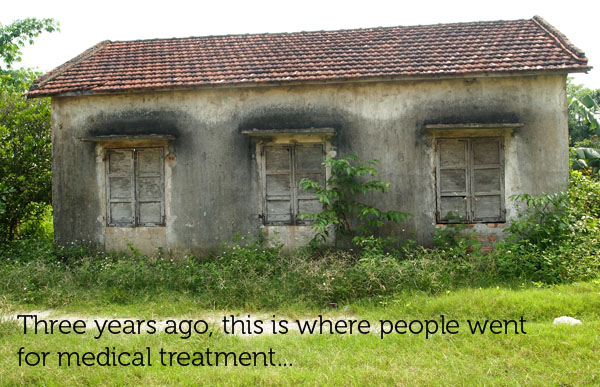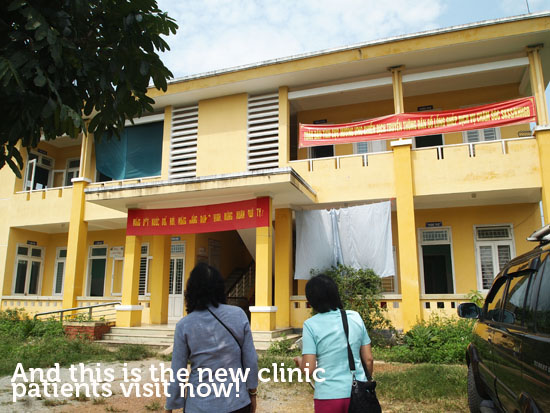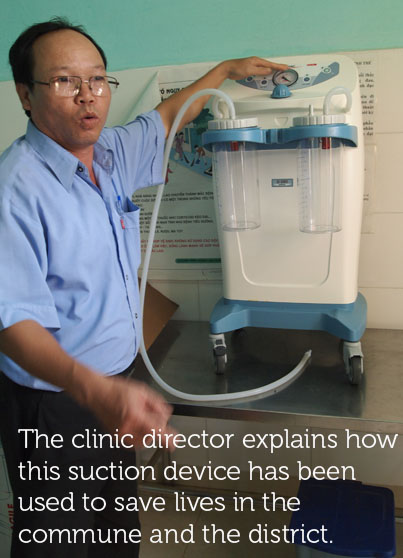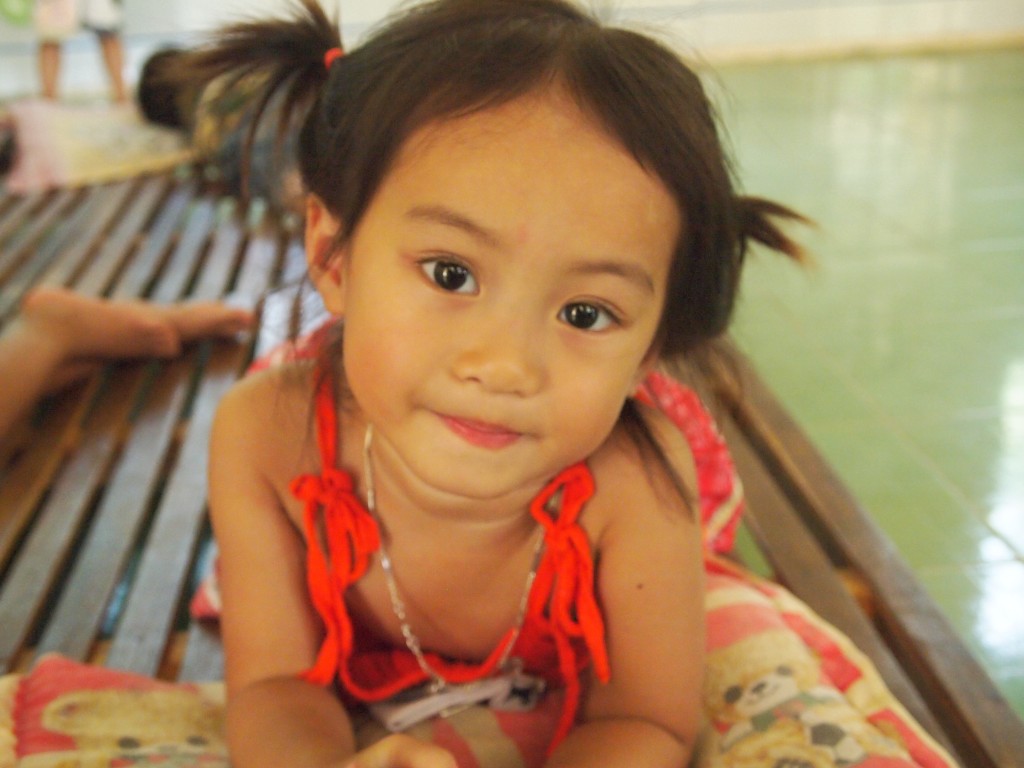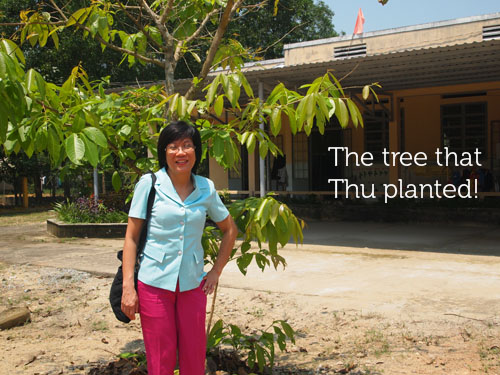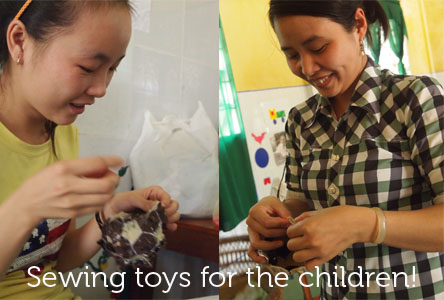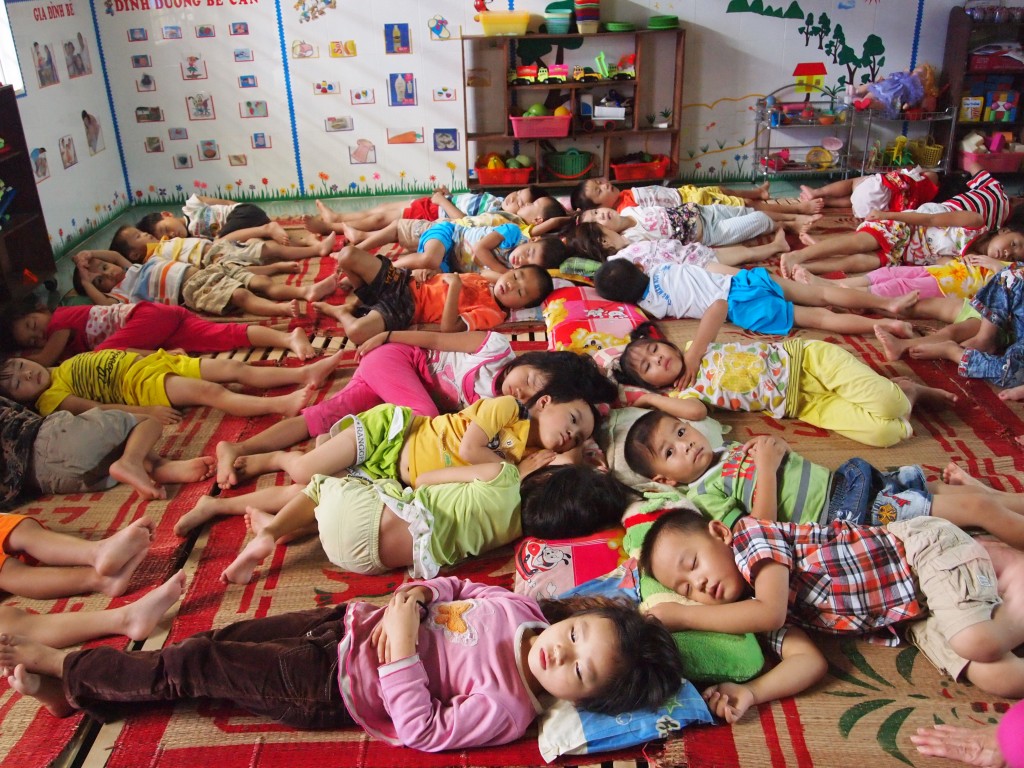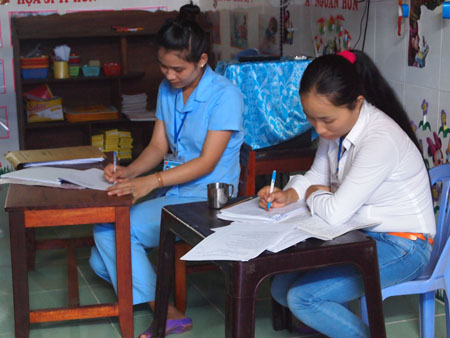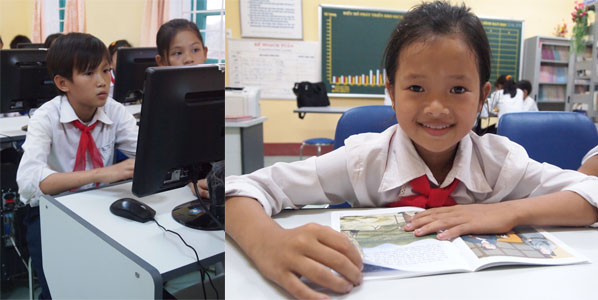We arrived in Thua Thien Hue on April 15th. We hadn’t originally planned to visit Thua Thien Hue, but realized we could squeeze in a trip to the country’s former capital en route to Da Lat. We ended up having an extremely productive detour.
Since the Hue airport is currently closed for renovations, we flew into Da Nang International Airport and immediately hopped on a two hour shuttle to Hue. We reached Hue a little after 4 p.m., so there wasn’t much time to visit projects on our first day there…but there was time for delicious Hue cuisine! We spared no time in stuffing our bellies with banh bot loc, banh beo, banh it ram, and banh nam (various types of steamed banana leaf-wrapped, tapioca, and rice flour specialty dishes). The nuoc mam (fish sauce) was brewed to perfection. Sorry to say we were too busy stuffing our faces to take pictures, but take our word for it: Hue food is loosen-your-belt-and-worry-about-that-all-those-carbohydrates-some-other-day good.
With our energy replenished, we set out early in the morning to the Center for Vocational & Job Promotion for Handicapped individuals. Throughout our trip to Vietnam, we’ve observed that Vietnam is an especially difficult country for disabled individuals to live in. Most facilities are built vertically to conserve ground space; that means multiple levels with spiral staircases and, most often, no elevators. The steps in Vietnam also tend to be higher than in the U.S., and steps may also seem to be inserted in places where steps are not needed. In actuality, these steps are designed to prevent water from flooding the floors during the rainy season. But while they may prevent one catastrophe from happening, they have the effect of turning Vietnam into a country with limited disability access. With difficulty even getting in and out of buildings, it’s no wonder that disabled individuals have an extremely difficult time finding employment.
As we reflected on these conditions, we wanted to create more opportunities for disabled individuals to gain employable skills and ultimately a fulfilling career. Our trip to the Center for Vocational & Job Promotion for Handicapped is the start of what we hope to be a long and rewarding partnership in doing just that. We examined the Center’s facilities and were impressed by all the different training opportunities we saw. There were embroidery classes , clothes production classes (with customers for their products already secured), woodwork classes, and electrical classes. Students of any gender can join any class, depending on their interest. There is also a dorm for students for whom the commute to school everyday would be too far. As we solidify and strengthen our partnership with the Center, we want to look into the feasibility of offering IT-related training and opportunities for the students to continue their general education as well.
After saying goodbye to the Center’s students and staff, we headed towards a commune clinic we helped furnish with medical equipment alongside our partner Rotary Club of San Jose – District 5170. The clinic here supports a population of about 10,500 people, and there were over 18,000 visits to clinic last year. Some people came from other communes to get treated at the clinic as well. The most frequent visitors were pregnant women and students. According to the clinic director, the maternal mortality rate is going down in this area thanks to the increased availability of health services!
Do you see this little shack? That was where the clinic used to be three years ago!
The new clinic was erected right next to the old one, highlighting the significant improvements in Vietnam’s public health over the years. The equipment provided by VNHELP and Rotary have been especially helpful. Sometimes, staff from the district commune (which is supposed to a tier above the commune clinic) call to borrow the equipment from the commune for certain medical procedures! The clinic director is happy to lend the equipment if it means another life saved.
Next stop was the Phong Thu Kindergarten/Pre-school, the first of many schools in rural Thua Thien Hue we’ve helped construct over the years. The school system is a little different in Vietnam. In the U.S., pre-schools are usually separate facilities, while kindergartens are part of elementary schools. In Vietnam, “mầm non” houses both pre-schoolers and kindergarteners. Sometimes you will see toddlers at “mầm non” who are not yet 2 years old!
We arrived just around nap time, so the students were either drifting off to sleep or already dozing under mosquito nets. This little one fell asleep about 5 five minutes after this photo was shot.
Thu planted a sapling in front of the school during the groundbreaking ceremony a few years ago, and now it’s grown into this thriving tree! We hope to see this tree grow stronger like the children, providing them shade and protection from Vietnam’s powerful sunlight.
We were so touched by the dedication of the teachers at the school. While the students were sleeping, the teachers kept watch and took advantage of the quiet moments to stitch toys for the children. Phong Thu was one of the schools that qualified to receive renovation funds from VNHELP and our donors, so we were very pleased to see that the school was in good shape and the students were doing well. We were very impressed with the school’s hygiene, which continues to be an issue in many parts of Vietnam.
Phong Thu was followed by Phong My Kindergarten/Pre-School. When we pulled into the school’s yard, we observed two things you wouldn’t see at schools elsewhere: first, a blue sheet covering the school’s entrance; second, a cow tied to the yard, just about 50 feet from the school doors. The blue sheet, we learned, was to keep the sunlight from getting in and the heat from baking the school while the children slept. The cow was there to eat up any weeds in the yard, and it is led away when it’s time for the students to wake up again.
When we entered the classrooms, we knew right away that the school is over capacity. The school is built for 60, but there were at least 75 students—a lot to handle for such a small school. The reason is that once Phong My school was built, parents from surrounding communes also wanted to enroll their children in the new facility, and it was difficult to turn them down.
Since so many parts of rural Thua Thien Hue are underdeveloped, there is a system of satellite schools, which are basically one classroom buildings (or, perhaps more accurately, shacks), where parents send their children. But these satellite schools have no kitchen, so parents have to pick up their children at noon each day to feed them, less their children are left hungry and walking long distances during the broiling lunch hour. Naturally, when the new school was built, these parents wanted their children to have access to better facilities where they could stay the whole day. Many in the area are ethnic minorities, so the principal would do her best to accommodate for them. With no additional state funding despite the increased students, it’s been very difficult on the staff. We are thinking hard about what role we can play in aiding the school.
Just like at Phong Thu, the dedicated Phong My teachers used the nap time to catch up on grading homework and quizzes.
By the time we reached our next destination, the Thi Ong Kindergarten/Pre-school, the children had already awaken from their naps. They were balls of energy in the way only children can be. Though shy at first, the children warmed up to the camera quickly. Thi Ong was built with support from donors Mai Dolch and the Tees Family Foundation. We are proud to report that the school has grown to become a national-standard school.
The last school we visited for the day was Phong Dinh Primary School. The school has received much generosity from donor Mai Dolch, so we’ve been able to equip the school with a computer room and a library. Just like the smaller children at the kindergarten/pre-schools, the primary school students tended to be very shy at first. In fact, they were very quiet in the beginning because they wanted to show us their best behavior. But eventually they loosened up and joked around with us (especially the boys). Since they’re older, they’ve also begun learning English and even tested out their conversation skills with us.
Overall, the trip to Hue turned out to be an meaningful look into the state of childhood education in Vietnam. Vietnam has made strides into improving education access, and just looking at the numbers alone, you’d think that a 95% participation rate (according to UNICEF) means that we’re closing to reach our universal education goal. But then you visit the school, see how remote and rudimentary some of the schools are, observe how basic many of the facilities are, and realize we’ve still got a long way to go. But it’s a journey worth taking.
Tags: Vietnam Trip 2013




